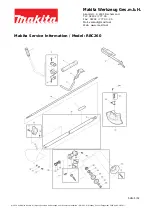
- 9 -
3. BASIC SAFETY INSTRUCTIONS
3.1.0. NOTICES IN THE OPERATING INSTRUCTIONS
• The basic requirement for safe and proper use and fault-free
operation is knowledge of the basic safety instructions and safety
regulations.
• In addition, the rules and regulations for the place of use must be
followed.
3.2.0. OPERATOR‘S RESPONSIBILITY
The operator is obligated to only allow persons to work with this tool
who are familiar with the basic regulations for work safety and accident
prevention and are trained in how to use the tool. Safety-conscious
work of the personnel must be checked at regular intervals.
3.2.1. PERSONNEL‘S RESPONSIBILITY
All persons working with this tool are obligated to comply with the basic
regulations for work safety and accident prevention prior to starting
work.
3.2.2. PERSONNEL TRAINING
Only trained and qualified personnel may work with this tool. The
responsibilities of the personnel for the assembly, start-up, operation,
maintenance, and servicing must be clearly defined. Personnel-in-
training may only operate the tool in the presence of an experienced
person.
3.3.0. RISKS WHEN WORKING WITH THE TOOL
Faults that may hinder safety must be immediately rectified.
The tool was built in accordance with state-of-the-
art technology and approved safety regulations. Still,
when using it, risks to life and limb of the user or third
parties or other material assets may arise.
Only use the tool
• for the proper intended use
• in working order with regard to safety










































